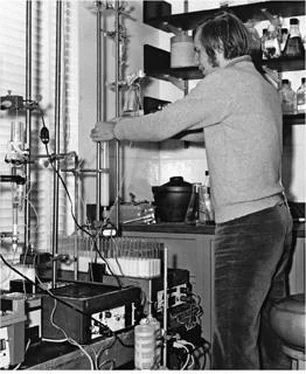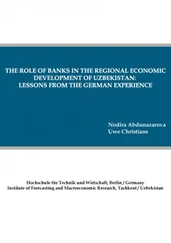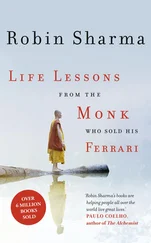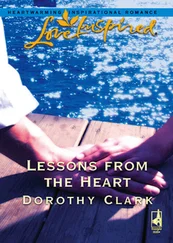James Watson - AVOID BORING PEOPLE - Lessons from a Life in Science
Здесь есть возможность читать онлайн «James Watson - AVOID BORING PEOPLE - Lessons from a Life in Science» весь текст электронной книги совершенно бесплатно (целиком полную версию без сокращений). В некоторых случаях можно слушать аудио, скачать через торрент в формате fb2 и присутствует краткое содержание. Жанр: Биографии и Мемуары. Описание произведения, (предисловие) а так же отзывы посетителей доступны на портале библиотеки ЛибКат.
- Название:AVOID BORING PEOPLE: Lessons from a Life in Science
- Автор:
- Жанр:
- Год:неизвестен
- ISBN:нет данных
- Рейтинг книги:5 / 5. Голосов: 1
-
Избранное:Добавить в избранное
- Отзывы:
-
Ваша оценка:
- 100
- 1
- 2
- 3
- 4
- 5
AVOID BORING PEOPLE: Lessons from a Life in Science: краткое содержание, описание и аннотация
Предлагаем к чтению аннотацию, описание, краткое содержание или предисловие (зависит от того, что написал сам автор книги «AVOID BORING PEOPLE: Lessons from a Life in Science»). Если вы не нашли необходимую информацию о книге — напишите в комментариях, мы постараемся отыскать её.
AVOID BORING PEOPLE: Lessons from a Life in Science — читать онлайн бесплатно полную книгу (весь текст) целиком
Ниже представлен текст книги, разбитый по страницам. Система сохранения места последней прочитанной страницы, позволяет с удобством читать онлайн бесплатно книгу «AVOID BORING PEOPLE: Lessons from a Life in Science», без необходимости каждый раз заново искать на чём Вы остановились. Поставьте закладку, и сможете в любой момент перейти на страницу, на которой закончили чтение.
Интервал:
Закладка:
Avoiding your competition because you are afraid that you will reveal too much is a dangerous course. Each of you may profit from the other's help, and an effective dead heat that allows you to publish simultaneously is obviously preferable to losing. And if it happens that someone else does win outright, better it be someone with whom you are on good terms than some unknown competitor whom you will find it hard not to at least initially detest.
5. Work with a teammate who is your intellectual equal
Two scientists acting together usually accomplish more than two loners each going their own way. The best scientific pairings are marriages of convenience in that they bring together the complementary talents of those involved. Given, for example, Francis's penchant for high-level crystallographic theory, there was no need for me also to master it. All I needed were its implications for interpreting DNA X-ray photographs. The possibility, of course, existed that Francis might err in some fashion I couldn't spot, but keeping good relations with others in the field outside our partnership meant that he would always have his ideas checked by others with even greater crystallographic talents. For my part, I brought to our two-man team a deep understanding of biology and a compulsive enthusiasm for solving what proved to be a fundamental problem of life.
An intelligent teammate can shorten your flirtation with a bad idea. For all too long I kept trying to build DNA models with the sugar phosphate backbone in the center, convinced that if I put the backbone on the outside, there would be no stereochemical restriction on how it could fold up into a regular helix. Francis's scorn for this assertion made me reverse course much sooner than I would have otherwise. Soon I too realized that my past argument had been lousy and, in fact, the stereochemistry of the sugar-phosphate groups would of course move them to outer positions of helices that use approximately ten nucleotides to make a complete turn.
In general, a scientific team of more than two is a crowded affair. Once you have three people working on a common objective, either one member effectively becomes the leader or the third eventually feels a less-than-equal partner and resents not being around when key decisions are made. Three-person operations also make it hard to assign credit. People naturally believe in the equal partnerships of successful duos—Rodgers and Hammerstein, Lewis and Clark. Most don't believe in the equal contributions of three-person crews.
6. Always have someone to save you
In trying to be ahead of your time, you are bound to annoy some people inclined to see you as too big for your britches. They will take delight if you stumble, believing your reversals of fortune are deserved. They may reveal themselves only in the moment of your discomfiture: often you find them controlling your immediate life by, say, determining whether you will get your fellowship or grant renewed. So it always pays to know someone of consequence—other than your parents—who is on your side. My hopes to go for broke with DNA by going to Cambridge would have gone nowhere if my phage-day patrons, Salvador Luria and Max Delbrück, had not come to my rescue when my request to move my fellowship from Copenhagen to Cambridge was turned down. I was then judged, not without cause, to be unprepared for X-ray crystallography and urged to move instead to Stockholm to learn cell biology. Immediately John Kendrew offered me a rent-free room in his home, while Luria, through a personal connection, got my fellowship extended for eight months. Soon after, Delbrück arranged a National Foundation for Poliomyelitis fellowship for the succeeding year. In finding the funds that kept me in Cambridge, Luria and Delbrück were hoping that my new career as a biological structural chemist would succeed and do them proud. But they fretted about my being too far from their fold, knowing that I would likely leave empty-handed from my long Cambridge stay. The second year of my fellowship was, in fact, to be spent at Caltech, giving me at least a measure of security in the event the DNA structure was solved by others. In leaving one field for another, it never makes sense to burn your past intellectual bridges at least until your new career has taken off.
7. MANNERS PRACTICED AS AN UNTENURED PROFESSOR
THE HARVARD to which I moved in the fall of 1956 thought of itself as the best university in the United States. Most certainly it was the oldest, and with its endowment the largest of any university's, it saw no reason not to have the most distinguished faculty of any institution on the planet. Before any tenure appointment, a group of eminent experts in the field were assembled to advise the president as to how the proposed candidate ranked among peers worldwide. The use of such ad hoc committees dated from the administration of James Conant, a distinguished organic chemist and only the second scientist ever to lead Harvard. Taking over from Lawrence Lowell in 1933, he presided for twenty years, resigning in 1953 to serve as U.S. high commissioner and later ambassador to Germany. Deeply involved in the military-related science that helped the United States win World War II, he seized upon the improvements in the nation's scientific capability to raise the bar correspondingly at Harvard's mathematics, physics, and chemistry departments.
The Harvard biology faculty contained several world-class scientists, in particular the vision biochemist George Wald and the evolution authority Ernst Mayr. But too many of its faculty had pedestrian outlooks incommensurate with the quality of most Harvard students. All too typical was the Biology Department's uninspired introductory course. It abounded in dull facts for its largely premedicai enrollees to memorize. One year its abject dreariness provoked the
studentwritten “Confidential Guide” to suggest that one of its instructors might do well to shoot himself.Unlike Caltech, where genetics was the dominant biological discipline, Harvard's department, then chaired by the pedantic amber insect specialist Frank Carpenter, did not treat one field of biology as any more important than another. Together with his forlorn assistant, the former Rhodes scholar Orin Sandusky, Carpenter lumberingly oversaw the department's day-to-day activities in the massive five-story Biological Laboratories. It was built in the early 1930s in brick textile factory style, much of the money for its construction coming from the General Education Board of the Rockefeller Foundation, whose members wanted the benefaction to promote research as opposed to teaching. The nonexistence of a Biolabs lecture hall big enough for large biology classes was thus not a mistake but a matter of principle.
By the time the construction of the Biolabs started in 1932, the Depression had arrived and funds to outfit the north wing never materialized. Twenty-five years later, this wing's long empty factorylike floors suggested themselves to me as more than sufficient space for DNA-based biology to thrive at Harvard if the university was so inclined. Equally important to this objective, many senior faculty members were on the verge of retiring. Their large square corner offices, connecting to secretarial areas, themselves big enough for professors in less prestigious institutions, would soon be free. No lunchroom existed within the Biolabs either, and at noon the notables set off for the Georgian-style Faculty Club on Quincy Street. There they invariably lunched by themselves around the same rectangular table just inside the main dining room. Administrative minutiae, not ideas, dominated most conversations, with food chosen from a menu featuring horse steak, a proud holdover from wartime's austerity. Off the main dining room and usually entered by its own outside entrance was a separate room for women guests. Then there were effectively no women on Harvard's Faculty of Arts and Sciences.
Читать дальшеИнтервал:
Закладка:
Похожие книги на «AVOID BORING PEOPLE: Lessons from a Life in Science»
Представляем Вашему вниманию похожие книги на «AVOID BORING PEOPLE: Lessons from a Life in Science» списком для выбора. Мы отобрали схожую по названию и смыслу литературу в надежде предоставить читателям больше вариантов отыскать новые, интересные, ещё непрочитанные произведения.
Обсуждение, отзывы о книге «AVOID BORING PEOPLE: Lessons from a Life in Science» и просто собственные мнения читателей. Оставьте ваши комментарии, напишите, что Вы думаете о произведении, его смысле или главных героях. Укажите что конкретно понравилось, а что нет, и почему Вы так считаете.












